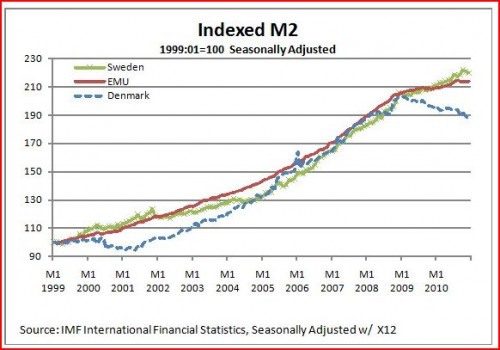Tyler Cowen, Richard Rorty, and the truth about wealth
In several recent posts Tyler Cowen has tried to draw a distinction between how much wealth we believed we had, and how much wealth we really had. I was somewhat skeptical of his argument, but also thought it had some merit. Indeed in an earlier post (not posted yet!) I tried to distinguish between wealth we correctly thought we had, which was later lost due to bad policy (1929), and wealth we thought we had, that we never really had (2006.) Now I have doubts about my argument, indeed I think we might both be wrong. But I’m not sure.
Consider the following 5 scenarios:
1. The bank makes a typo, which leads you to believe you have more money than you actually have. The typo is eventually corrected.
2. Your family believes it owns 10 1933 $20 gold pieces, worth $80 million. Later you find out the government has a different view.
3. The public believes it has lots of housing wealth in 2006, but there was never any prospect that these values could be maintained.
4. The public believes it has lots of housing wealth in 2006, but later an immigration crackdown followed by tight money reduces housing prices.
5. The public believes it is very wealthy in 1929, but later the Fed cuts NGDP in half and caused mass unemployment.
A few days ago I thought there was a clear distinction between case 1 and case 5. Now I don’t know where to draw the line. Indeed I don’t know if there is a line to be drawn.
I’d like to say the public really was wealthy in 1929, and that later decisions by the Fed destroyed that wealth. But is that a scientific way of looking at things? At levels about subatomic particles, we tend to assume that things follow deterministic laws. Why couldn’t someone argue: “That national wealth in 1929 was never real, because the Fed is a part of our economy. It was a dysfunctional institution in 1929, so it was only a matter of time before they screwed up. We just didn’t know it yet.”
Rorty argued that when people say “Most people think X is true, but I believe Y is true,” they actually mean “most people think X is true, but I predict that in the future people will come to believe Y is true.” Rorty saw no distinction between what is true, and what we believe is true.
Rorty also believed; “That which has no practical implications, has no philosophical implications.” So what are the practical implications of the distinction between believing one is wealthy, and actually being wealthy? Obviously society acts on the basis of beliefs. So for most people it is a distinction without any significance. Like the difference between saying I believe X, and I believe X is true. On the other hand the skeptic who believes the wealth is phony (i.e. predicts it will later be seen as phony), would obviously see practical implications for his belief. Indeed policy implications.
Imagine I’m debating Tyler Cowen on the question of whether the 2006 wealth was real in 2006. What’s at stake? I might argue that the wealth was 100% real, but later policies like immigration crackdown and tight money reduced the wealth later on. The practical implication is that we might want to reconsider those policies. Or, one could argue that the extra wealth was only 40% real and the other 60% was irrational exuberance. In that case the policy implication might shift slightly. It doesn’t mean easier money couldn’t have helped a bit, but you’d also want to put in place banking regulations robust enough to prevent housing bubbles from damaging the banking system. Indeed you might also want to do that if the problem was 100% the Fed’s fault, but the necessity would be greater if optimal monetary policy couldn’t solve the problem.
Are we rich if we believe we are rich? I can’t answer that question. Rorty would say beliefs are all we have. Yet he also allows for dissenting voices. Just because most people get swept up in the housing bubble, and believe ranch houses in San Bernardino are worth $500,000, doesn’t mean Shiller, Krugman, Baker and Roubini have to believe that. One the other hand, current market values have a very practical implication, they’re what we can sell things for. In that sense they are real.
Each day that goes by we find out that the previous day’s value of the S&P 500 was wrong, as new information comes in. Or maybe it was right; maybe it was “true,” based on what we knew at the time. What’s the TRUE value of the S&P 500? God only knows.
PS. I just noticed an interesting shift in wording between the first and second posts that I linked to above. First post:
We were not as wealthy as we thought we were.
And second post:
We are not as wealthy as we thought we were
See the difference? If applied to someone in 1933 talking about 1929, I’d have once said the first was false, and the second was true. Now I don’t know what to think. I wish Rorty was still alive to help me out. Now I feel alone in the universe, with no one to provide true answers.
PS. The second Cowen post that I linked to above didn’t make sense to me. I left a comment over there—maybe someone can explain the connection to AD.


